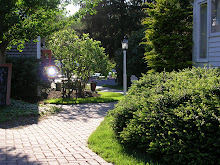Below are some of the fabrics found in design center showrooms at, for instance,
Stuart Swan Furniture, Hollywood at Home, and Pierre Deux.
Stuart Swan Furniture, Hollywood at Home, and Pierre Deux.
There is and has always been a fascination in the design world with COLOR. Even within the field of Organizational Psychology there is a sub-specialty that focuses entirely on color and its effect on behavior and performance.
Color psychology, however, is far from an exact science. It is a relatively young area of investigation and a rather difficult one, for a few reasons, in particular. TWO of these reasons have to do with human vision and cognition:
Color psychology, however, is far from an exact science. It is a relatively young area of investigation and a rather difficult one, for a few reasons, in particular. TWO of these reasons have to do with human vision and cognition:
1. No two people see colors in quite the same way. That is, everyone perceives color differently. While these differences may be subtle, they are sufficient to ensure that the response to a decorated space is also unique.
2. The way people perceive color is directly related to personal experience and memories. Individual responses to the colors used in a space will depend as much on their evocative power as it will on the scientific process of color perception.

ABOVE is a photograph of a home in London. It's a great example of an unconventional use of color that may suit some but not others!
3. Different cultures employ and assess color in remarkably different ways. Accordingly, the associations made by viewers a decorated space and the reception of that space will be correspondingly different.

Above is an interior by Mario Buatta.
It's an example of a design influenced by both a specific time and place.

Above is an example from the site of a great design that is inspired by a Japanese aesthetic.
It is warm and modern as well as recognizably regional.
With that said, below are just a (VERY) few of the general findings from the field of color psychology. They can be applied in a multitude of ways depending upon individual preferences and the desired effect.
NEUTRAL COLORS include whites, blacks, grays, and browns. These colors are relatively common and can be used in virtually any room. They're generally regarded for their calming effect, though, may also be considered to be boring!
NEUTRAL COLORS include whites, blacks, grays, and browns. These colors are relatively common and can be used in virtually any room. They're generally regarded for their calming effect, though, may also be considered to be boring!

These are two interiors that use neutral tones.
Above was featured in Traditional Home magazine,
Below from Architectural Digest magazine.
They illustrate the versatility of a simple palate.

WARM COLORS include reds, yellows, oranges, and pinks. Depending on the saturation, these may have different general effects:
COOL COLORS include blues, greens, and some purples. They are, for the most part, emotionally and physically relaxing. They can also improve productivity. Like warm colors, however, the specific effect also depends largely on the saturation of the tone.
1) Vicki Horton's ORANGE entry
2) Kelli Interior Design living PINK
3) YELLOW from birminghammail.com
2) Kelli Interior Design living PINK
3) YELLOW from birminghammail.com
COOL COLORS include blues, greens, and some purples. They are, for the most part, emotionally and physically relaxing. They can also improve productivity. Like warm colors, however, the specific effect also depends largely on the saturation of the tone.
 A BLUE bedroom featured in Architectural Digest.
A BLUE bedroom featured in Architectural Digest.The top choice for bedroom decor...
A BLUE kitchen also featured in Architectural Digest.
It should be noted that some believe blue acts to suppress the appetite...
DARK COLORS, whether warm or cool, generally make a space feel smaller than it is. In a large room this may be employed to make it feel cozier, while in a smaller space it can lead to a sense of being closed in.
COLOR COMBINATIONS are often chosen to reflect a personal preference, though, some are generally more popular than others. For instance, a palate of brown, orange, and avocado was popular during the nineteen seventies and is once again emerging as a favorite amongst designers. Also, cool blues and warm yellows are commonly seen in current design magazines. Both combinations employ classic tones along with more vibrant colors for add energy and warmth. Also, it may be used in virtually any space, from living room to powder room.
COLOR COMBINATIONS are often chosen to reflect a personal preference, though, some are generally more popular than others. For instance, a palate of brown, orange, and avocado was popular during the nineteen seventies and is once again emerging as a favorite amongst designers. Also, cool blues and warm yellows are commonly seen in current design magazines. Both combinations employ classic tones along with more vibrant colors for add energy and warmth. Also, it may be used in virtually any space, from living room to powder room.
Note: In each of the above categories the colors have been pluralized. This is because each family has a virtually limitless range of slightly different tones and shades, which, again, contributes to the difficulty of color psychology. It is pretty unlikely that the color a stylist chooses is a perfect match to the one used in a study!














No comments:
Post a Comment